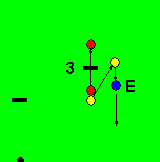 Fig 1. 4-back after hoop 3. Escape ball (E) beside 4-back |
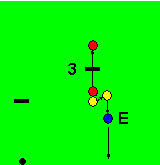 Fig 2. 4-back after hoop 3. Escape ball South of peelee |
The purpose of this article is to point out the opportunities when the peels may be done easily.
|
|
|
|
A peel is where you cause a ball, other than the one you are striking, to run its next hoop and thereby score a point. The mark of an 'A' class player is being able to complete the triple peel. To qualify the player must peel another ball through 4-back, penult, rover and peg it out, whilst taking their own ball through its hoops in one turn.
A 'straight' peel is when you peel a ball just before you run that hoop yourself. Hence in a straight triple peel you peel 4-back before running it yourself, then penult, then rover! When a straight peel is to be done be careful not to send a pioneer to the same hoop so that it blocks the approach of the peelee or the peel itself. Also remember your turn ends if your peelee flies through the hoop and leaves the lawn!
There is a discussion on peeling and one route by which a triple peel may be achieved elsewhere on this site ("PEELING"). The principal things to remember are your priorities; 1) make your next hoop, 2) keep the break going and, finally, 3) do fancy things (e.g. peeling). There is no merit in snatching a peel if your break fails. Another thing to remember is that there is no agenda for the triple peel - you do not have to peel 4-back when making hoop 3, penult when making hoop 6 ...
For the complete treatise on the triple peel and advanced tactics the reader is encouraged to read Keith Wylie: Expert Croquet Tactics (currently around £11 from the Croquet Association). Unless your handicap is below one or so much of what is there is esoteric, however the sections on openings and leaves should be recommended reading for all croquet players. In what follows it is assumed that a four-ball break is in progress. The detail is deliberately light as it is assumed that the people for whom this article will be useful will be able to follow the gist. The ball positions indicated are vague and are not intended to be more than an illustration - the precise positions are left as an exercise to the player! The player is also left to ensure that the correct colours of balls arrive at the right places!
Notation for diagrams: Red is the peelee, Yellow the striker's ball, and Blue the escape ball (E). Black is a pioneer when relevant. Hoops indicated by numerals or 1-b for 1-back etc., P for Penult and R for rover
The escape ball can be in two places;
1). Off to one side of the hoop about level with it (fig 1). The peel is achieved with a roll shot, the striker's ball obtaining a rush on the escape ball down the lawn to near the pioneer on hoop 4, or2). South of the peelee leaving sufficient room to play a stop shot peel (fig 2), then turn around and rush the escape ball to near the pioneer on hoop 4.
 Fig 1. 4-back after hoop 3. Escape ball (E) beside 4-back |
 Fig 2. 4-back after hoop 3. Escape ball South of peelee |
The advantage in the latter is that 'pull' is not a factor in stop shots. In a roll shot however the forward ball has top spin which will help it run the hoop.
Penult can subsequently be peeled easily after hoop 6 or straight.
| After hoop 4 the reception ball and pivot are sent to 4-back.
The escape
ball is sent to the West of 4-back and the peelee positioned near the
playing
side of the 4-back. After running hoop 5 a rush is obtained on that
reception
ball to corner three or the East boundary near 4-back. It is stopped to
1-back (see below, it can be wise
to place
it North of 1-back if this current peel looks unlikely), whilst getting
in a position to rush the peelee closer to 4-back. The peel is made
with
the striker's ball obtaining a rush to hoop 6 on the escape ball West
of
4-back (fig 3).
The penult peel would normally be considered on going to 4-back, although could be 'risked' going to 2- or 3-back. |
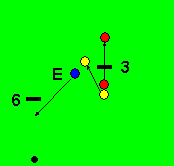 Fig 3. 4-back going to hoop 6 |
| After hoop 5 you need to croquet the reception ball North of 1-back and ensure that the peelee is close to the 'doorstep' of 4-back. Hoop 6 is run with a rush on its reception ball to corner three. The reception ball is stopped down to 2-back with the striker's ball arriving close to the peelee. This is roqueted in front of the hoop and a take-off peel is used to drive it through 4-back (fig 4). You need the pioneer on 1-back deep (North) so that you can do a moderately thick take-off and hence put some energy into the peelee. |
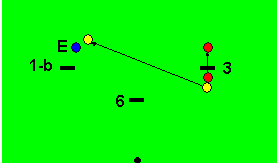 Fig 4. 4-back going to 1-back |
The penult peel can be done going to 4-back or straight.
After 2-back you should aim to get the peelee in front of 4-back. The reception ball from 3-back should be croqueted to the West of penult and the pivot rushed close to the peelee on 4-back. The penult pioneer should be to the side of penult to allow a clear passage for the rush of the peelee from 4-back to penult if the straight triple peel is attempted. If you place it plumb in front of penult your further peels will be frustrated.
The pivot is croqueted to the North East of 4-back as an escape ball
whilst obtaining a rush on the peelee to position it in front of
4-back.
The intention is that the peel will be achieved (fig 5), the hoop run
by
the striker's ball then the escape ball rushed to corner three (fig 6).
Care needs to be taken not to roquet the peelee when running the hoop
with
the striker's ball! With the escape ball rushed to corner three, it is
then stopped to the East side of rover whilst obtaining a rush on the
peelee
to penult.
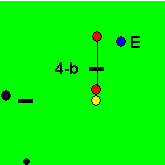 Fig 5. 4-back peel on 4-back. The peel is done with a stop shot |
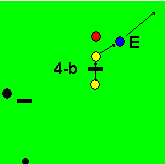 Fig 6. 4-back peel on 4-back. The hoop is run carefully to give a rush to corner 3 |
The penult peel can be done 'straight' after this.
Using the peelee as pivot (fig 8). Position the pivot (peelee) near
penult, place the pioneer (escape ball) for hoop 3 South West of hoop
3.
After running hoop 2 the reception ball is croqueted to hoop 4 and a
rush
obtained on the peelee to peeling position in front of penult. The peel
is made obtaining a rush on the escape ball to hoop 3.
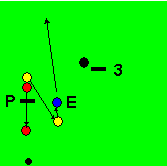 Fig 7. Penult peel with the peelee being the pioneer on hoop 2 |
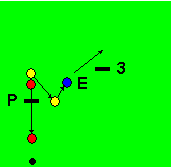 Fig 8. Penult peel with the peelee as pivot |
| This is when the penult peel is most often made in a triple.
The peelee
is brought to penult either after running hoop 4 or 5.
If peelee taken to penult after hoop 4, then you rush the reception ball to North boundary, cast it as a pioneer on hoop 6 whilst rushing the peelee closer to penult. Take off, make hoop 5 and then croquet the reception ball to 1-back whilst getting amongst the peelee and pioneer. If peelee taken to penult after 5, then the reception ball is rushed near to corner 3 and croqueted to 1-back whilst getting a rush on the peelee to penult. The peelee is placed in peeling position with the croquet stroke that approaches the hoop 6 pioneer. The aim in both cases is similar to '4-back after running hoop 3'; the escape ball is placed so that after the peel a rush is obtained on it to North Boundary (fig 9). With this peel the peelee either wants to travel well through the hoop or end up in the jaws. It can be awkward if it gets through the hoop by only a couple of inches. If it is jawsed it can be rush-peeled after 1-back. |
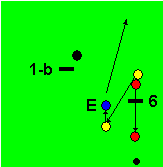 Fig 9. Penult peel going to 1-back |
The peel can also be made similarly to Figure 8 where the escape ball is the pioneer on 1-back.
If the peel is achieved before making 2-back there is an opportunity to do an early rover peel going to 3-back. There seems little especial benefit in doing the peel going to 3-back since there is no opportunity to do the rover peel other than straight. The balls may be better moved around to do the penult peel on going to 4-back.
| After 2-back, the 4-back pioneer (escape ball) is placed South West of 4-back (fig 10). After 3-back the reception ball is croqueted to the side of penult and the peelee rushed into peeling position. The peel is achieved obtaining a rush on the escape ball to 4-back. Again this peel should send the ball well through the hoop. It is messy if the peelee only rolls through penult by a few inches. |
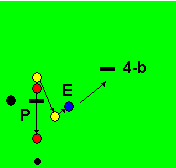 Fig 10. Penult peel going to 4-back |
| The peelee and another ball are brought to hoop 5; one may
have been
the pivot, the other the pioneer. The peelee is positioned in front of
rover and the escape ball a little to the East of hoop 5 (fig. 11).
Hoop
5 is run and the peelee roqueted. The peel is made with the striker's
ball
gaining a rush on the escape ball North close to the pioneer on hoop 6.
A three-ball break is used to make hoop 6.
As an alternative the escape ball can be North of the peelee prior to the peel allowing a stop shot peel and the subsequent rush North as before. |
 Fig 11. Rover peel after hoop 5 |
| This is particularly useful if you are attempting to triple
peel an
opponent. You know that you have only to peg them out before
committing
yourself to giving away a contact, i.e. running 4-back yourself.
The principle is the same for both 2- and 3-back; the pioneers (escape balls) for the hoops are placed deep (South) of rover (fig. 12). After running 1-back (or 2-back) the peelee is rushed in front of rover. It is peeled as the striker's ball gains a rush on the escape ball to the next hoop. |
 Fig 12. Rover peel going to 2-back |